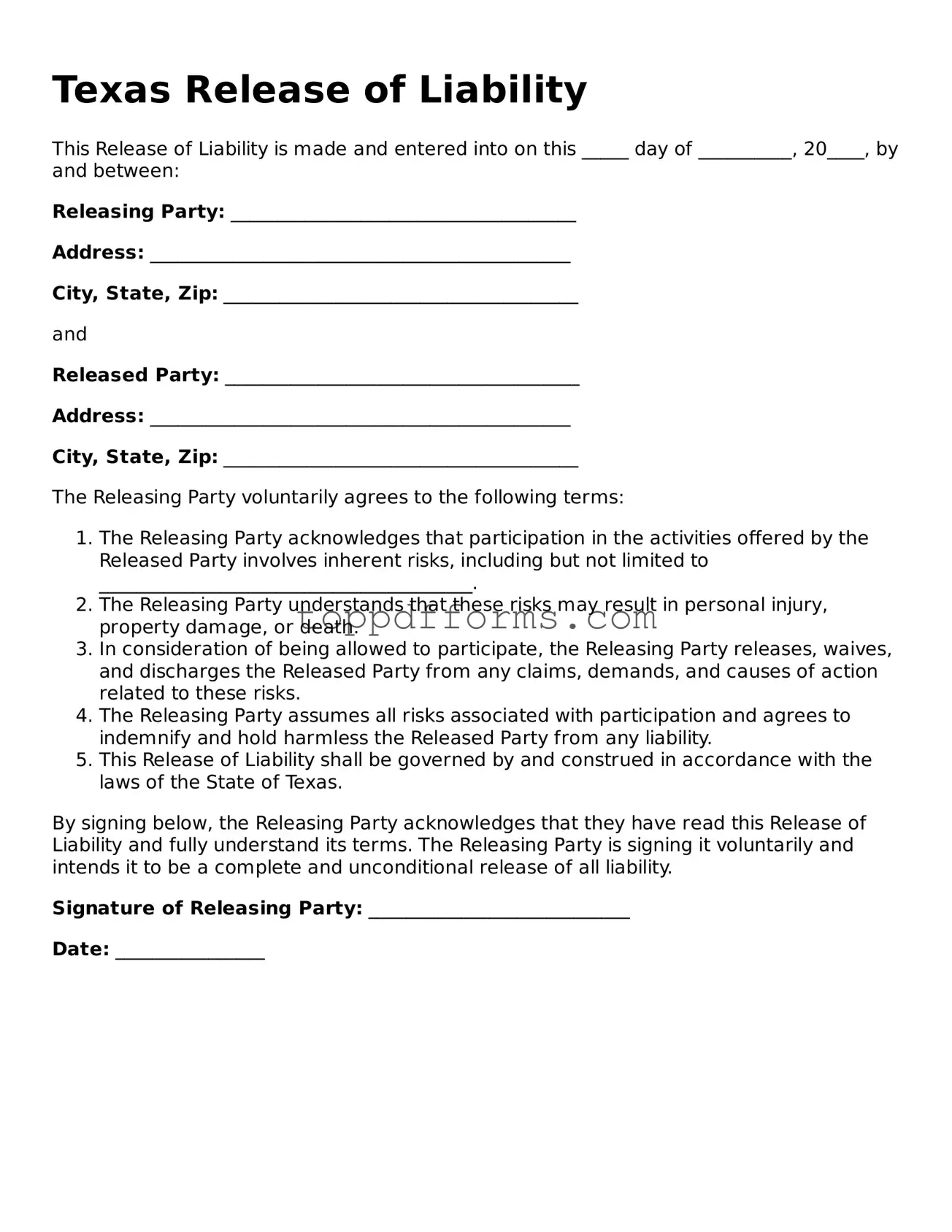What is a Texas Release of Liability form?
A Texas Release of Liability form is a legal document that individuals sign to waive their right to hold another party responsible for any injuries or damages that may occur during an activity. This form is often used in recreational activities, sports events, or any situation where there is a risk of injury. By signing, participants acknowledge the risks involved and agree not to pursue legal action against the entity organizing the activity.
Who needs to sign a Release of Liability form?
Typically, anyone participating in an activity that carries a risk of injury may be required to sign a Release of Liability form. This includes participants in sports, outdoor adventures, or any organized events. Minors will need a parent or guardian to sign on their behalf, ensuring that the responsible adult understands the risks and agrees to the terms.
Is a Release of Liability form enforceable in Texas?
Yes, a Release of Liability form can be enforceable in Texas, provided it meets certain legal requirements. The form must be clear and unambiguous, stating the risks involved and the intention to release the other party from liability. However, it is important to note that courts may not enforce these releases in cases of gross negligence or willful misconduct.
What are the key elements that should be included in a Release of Liability form?
A comprehensive Release of Liability form should include the following key elements: a clear statement of the activity being undertaken, a description of the inherent risks involved, the intention of the participant to release the organization from liability, and space for signatures of all parties involved. Including a date and contact information can also be beneficial.
Can a Release of Liability form protect against all types of claims?
No, a Release of Liability form does not protect against all types of claims. While it can shield the organizer from claims related to ordinary negligence, it may not be effective against claims arising from gross negligence, intentional misconduct, or violations of statutory duties. Understanding the limits of the release is crucial for both parties.
How does a Release of Liability form affect insurance claims?
Signing a Release of Liability form may impact insurance claims. If an individual has signed the release, it may limit their ability to recover damages through insurance claims against the organization. Insurance companies often consider the signed release when determining coverage and liability, so it is essential to understand its implications before signing.
Can a Release of Liability form be revoked after signing?
Generally, once a Release of Liability form is signed, it cannot be revoked unilaterally. The signed document is a binding agreement, and withdrawing consent after the fact is typically not permitted. However, parties may negotiate a new agreement if both sides are willing to amend the terms.
What should I do if I have questions about a Release of Liability form?
If you have questions or concerns about a Release of Liability form, it is advisable to seek legal counsel. An attorney can provide guidance on the implications of the form, help clarify any confusing language, and ensure that your rights are protected. It is important to fully understand the document before signing.
Where can I obtain a Texas Release of Liability form?
A Texas Release of Liability form can be obtained from various sources, including legal websites, local attorneys, or organizations hosting activities. It is important to ensure that the form is tailored to the specific activity and complies with Texas law. Customizing the form to fit the particular circumstances can help ensure its enforceability.
